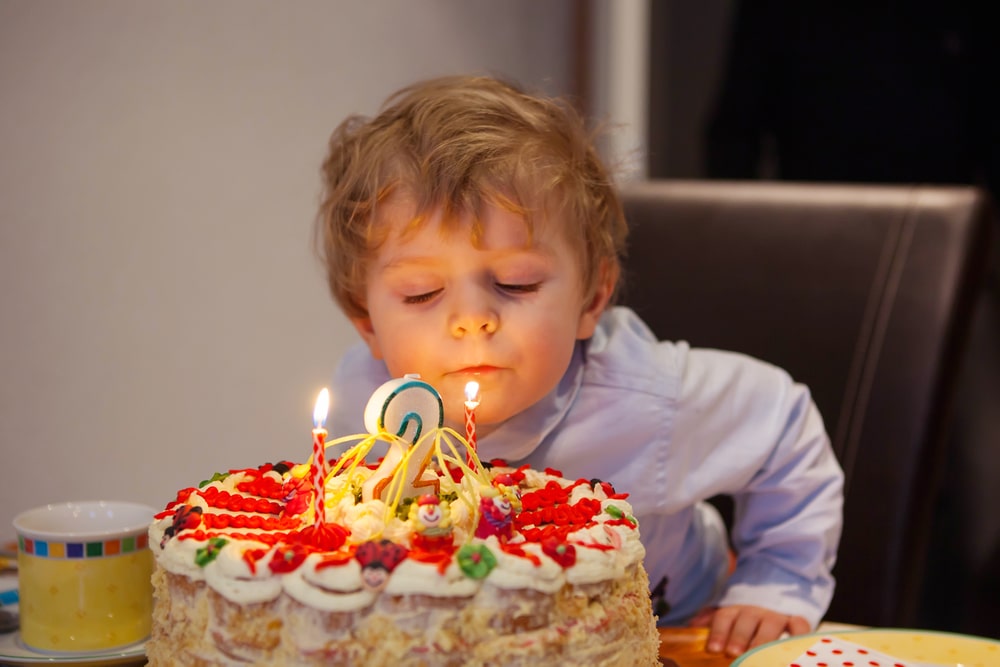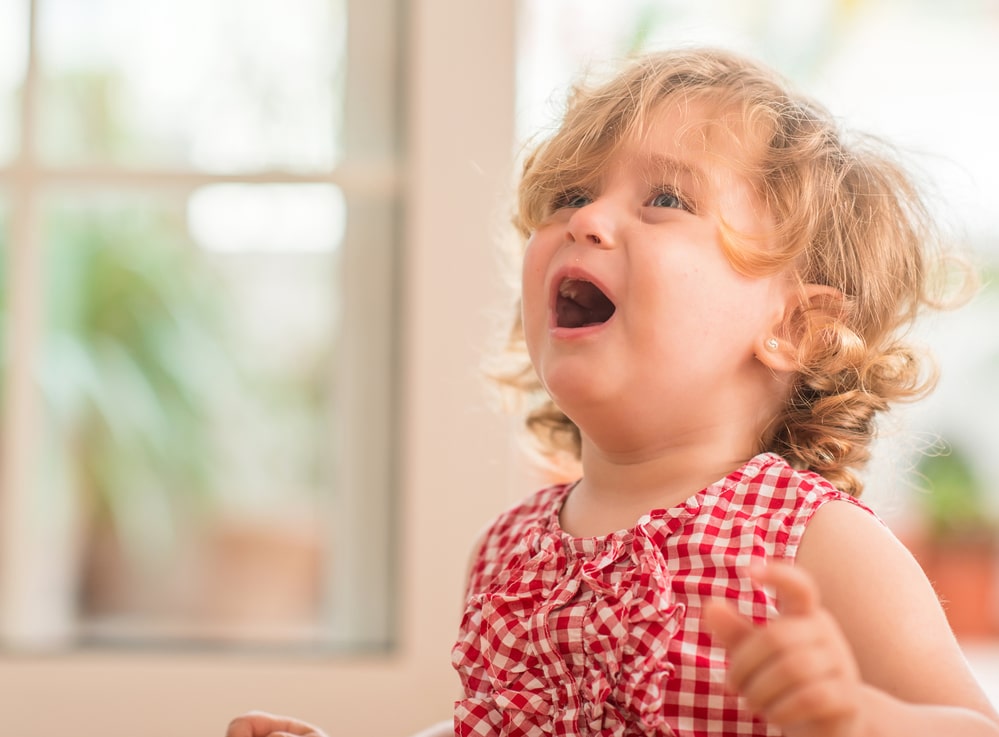When you become a parent you think that those early days of constant feeding, sleepless nights, colic, and teething are the worst things that you will have to deal with. Then bang!
You now have a two-year-old or three-year-old that has their own sense of self and knows exactly what they do and don’t want to do.
It feels as though the only word they know is “no” and your once calm, happy child is now a screaming, tantrum-throwing Tasmanian devil.
Don’t despair you are most certainly not alone and are not the first parent to throw your hands up and say “I can’t do this anymore!”
If you are feeling like you are literally hanging on by your fingertips check out some of our top tips and techniques to deal with the terrible twos or terrible threes.
What Is Normal Behavior For A 2 Year Old?
At this stage in their development, they have an awful lot going on. You can expect big feelings as this is one of the most important ages for emotional development.
They are dealing with a lot of their own emotions while also learning about other peoples.
Temper tantrums are common as toddlers are often unable to put into words the big emotions that they are dealing with such as frustration, anger, embarrassment, guilt, and shame.
They are also struggling to comprehend how their behavior is affecting other people.
By around two years of age, toddlers should be able to use sentences of 2-3 words or more. their speech should be easier to understand and they will use ‘I’, ‘you’ and ‘me’.
At this age, play is an important tool to help children learn and understand the world around them. They will begin to enjoy playing with others and may even be prepared to take turns with some help.
They will enjoy telling stories, singing, and reading. All of which are great to help with the vocabulary needed to communicate those big emotions.
View in gallery
Dealing With The Terrible Twos
There is no magic potion or quick fix for the behavior that comes with the terrible twos, and you very often have to just ride it out until they move on to the next stage of development.
But there are steps that you can take to make the experience less stressful for both of you. Here are a few tips to get you through the terrible twos!
1. Keep Regular Meal And Nap Times
This may be obvious to some and we sometimes forget how much tiredness and hunger can quickly lead to situations getting out of control.
Try to plan outings and errands around your little one’s nap and meal schedule. This means that they will be far less likely to be irritable and prone to tantrums.
If you do need to need to be out for longer periods of time ensure that you have packed lots of healthy snacks and drinks so they have something to nibble on while you are out and about.
2. Talk Through Potential Triggers
So before you enter a store talk to your child about the potential triggers such as candy or toys.
Let them know that they are not allowed a candy bar or toy, but that if they are good at the store then they can have a treat afterward.
3. Do Not Give In
If your child throws a tantrum about the candy bar or the toy or whatever it is they want and you give in, all you are doing is making it harder the next time.
The best way to prevent tantrums before they begin is to stand firm with your child and not going back on what you have said.
4. Boredom Is The Devil
There is no quicker way for a child to start acting up than when they are bored. But instead of shouting at a child who is acting up out of boredom, try to come up with creative ideas in which you can keep them occupied.
Try letting them use fun and interactive toys.
- TOY FOR 2 YEAR OLD: 2 year old girls and boys are ready to learn and explore through play,their imagination is expanding and enjoy creating their own fun with toy.It’s a good entry toy for 2 year old girls and boys,simple and easy to play, designed with a nature theme story to attract 2 year old girls and boys .Good fine motor skill toy will help 2 year old girls and boys in your life grow and find how they connect to the world, but mostly, it will bring a smile and laughter to their lips
Prices pulled from the Amazon Product Advertising API on:
Product prices and availability are accurate as of the date/time indicated and are subject to change. Any price and availability information displayed on [relevant Amazon Site(s), as applicable] at the time of purchase will apply to the purchase of this product.
5. The Key Is Being Consistent and Calm
When you are at home it may be a chance to just let your toddler work their way through their tantrum. But in public, the best way to deal with it is to remove them from the situation as quickly as possible.
If your child does throw a tantrum, take a deep breath, respond calmly, and do not give in to demands. Be consistent in your expectations for your children with regard to acceptable and unacceptable behavior.
6. Redirection Is Key
When your child misbehaves, it is often tempting as adults to offer some long explanation as to why the behavior is not acceptable. This often is lost on a toddler who honestly doesn’t really care.
Instead of offering a lengthy explanation try redirecting your toddler either verbally or physically to help them to focus on a new toy or task.
7. Praise Positive Behavior
Praise your children when their behavior is something that you approve of.
It is the simple things like saying “Well done for playing nicely with your little brother!” or “Thank you for helping me sort the laundry!”
This will help to reinforce the positive behavior and will offer them the attention that they may be craving in a positive light rather than through negative behavior.
How Do You Get Through The Terrible Twos?
Firstly, remember that the terrible twos do not last forever and they will soon be over.
As a parent who is currently living through the terrible twos and the terrible threes, I understand how it can feel overwhelming and that it is never going to end.
Just take a breath and remember it is just another way for your child to show you that they are reaching those developmental milestones and becoming more independent.
This also means you are doing a great job as a parent, even if you feel like you are not!
View in gallery
What Is Normal Behavior For A 3 Year Old?
Usually, a 3-year-old child can understand far more vocabulary than he can actually use. By around three years of age, your child will be able to use sentences of 3-5 words or more.
Her speech is good enough that for the most part, people will understand what they are saying. They will be able to name common objects and can point to parts of pictures.
By this age, many children are now developing not only physically but also emotionally.
You may notice that they become more social, and are able to cooperate with their friends, take turns, and may even begin to show some problem-solving skills.
By age 3 children begin to understand the idea of rules and can respond if told not to do something. Although they understand and realize that other people have feelings and needs, they can sometimes still find it difficult to not act impulsively.
Three-year-olds still do not have the ability to completely understand right from wrong and still require parental guidance and correction.
At this age, parents teach children what is appropriate and inappropriate behavior, they also teach that actions have consequences.
You may notice that your 3-year-old asks ‘why?’ all the time, in addition to this they should also be able to understand and follow three-part commands, have a better understanding of time such as morning, afternoon and night.
At this stage of development, your 3-year-old should be able to show affection for family and friends, understand the concept of mine and his/hers and they will now show a wide range of emotions, such as sad, angry, happy, or bored.
Another thing that you may notice is that your child’s imagination goes into overdrive. Your child may suddenly become afraid of strange things, such as a monster is hiding in the closet.
Dealing With The Terrible Threes
Many parents and experts believe that the terrible threes or “three-nagers” are far worse than the terrible twos.
But in reality, it is just different, a three year old has different needs and is at a different development stage than a two-year-old and this can be tricky for parents to deal with. Here are a few tips to get you through this next stage of development.
1. Yell Less and Love More!
Yelling can sometimes be our own reaction to the absolute frustration at the situation that we find ourselves in. It is not often rational and it certainly doesn’t help the situation.
But yelling can do more harm to our children than we realize – it can in the long run cause real psychological harm. Children need positive parenting for healthy brain development, rather than harsh punishment.
View in gallery
2. Label Behavior
Instead of getting angry and shouting, label the behavior. Do not underestimate what your children can comprehend, use words like patience, kindness, and diligence.
Label the behavior using the appropriate word and your three-year-old will soon catch on.
3. Be Engaged
If your three-year-old is pulling your cell phone out of your hands, trying to sit on your lap while you are typing, or getting in the way while you try to put laundry away, there is a pretty good chance that they just want some of your undivided attention.
I know as a parent it is not possible for them to have your full undivided attention all of the time. So try to give them small amounts of time of your full attention.
This means putting down the phone and stepping away from the computer. Look them straight in the eyes and ask them some questions and actually listen fully to their replies.
If you are lucky they may even give you an idea of how you can redirect them.
4. Set Clear Expectations
One way of doing this is to have a list of family rules. For a three-year-old, make the list short and simple. You could add things such as
- Use kind hands
- Don’t hurt other people
- Use nice voices
Discuss the rules daily and praise your child at mealtimes and bedtimes.
5. Sticker Charts
Ok, we all know how much children love stickers but this is never more so than when they are three years old. Enjoy this power that the stickers have and get a sticker chart.
- USA DESIGN: Adorable incentive charts in 3 designs (Gold Confetti, Silver Confetti, Color Confetti), made from photo-grade paper with bright eye-catching illustration, 81 sheets with 480 star stickers. Perfect for motivating children to form a nice behavior.
- QUALITY: Thick photo quality paper printed with non-toxic ink, keep your chart bright and shiny for long lifespan. Marker is also applicable for easy marking.
Prices pulled from the Amazon Product Advertising API on:
Product prices and availability are accurate as of the date/time indicated and are subject to change. Any price and availability information displayed on [relevant Amazon Site(s), as applicable] at the time of purchase will apply to the purchase of this product.
Start by keeping track of the days they ate all their breakfast, cleared their dishes, put all their toys away. You get the idea right!
6. Be Consistent
This does not mean harsh punishments or yelling. But what it does mean is addressing the same problem behaviors consistently. So if leaving all their toys out on Monday is ok then you can not expect them to clear them all up on Tuesday when told.
You need to be consistent in what is acceptable and not acceptable behavior. If you expect your child to say please and thank you today, then you expect them to say please and thank you every day!
7. Hug Your Child A Lot
Most 3-year-olds need lots of hugs and snuggles, even when you have a million things to do and are not in the mood.
Be ready to put aside how you are feeling and a million things that you have to do and hug your child lots every day! Don’t forget to tell them that you love them even when their behavior is testing.
8. Anticipate Repeat Behaviors
Like adults, children have patterns of misbehavior. They will consistently do the same things wrong again and again.
Is getting dressed a battleground every day or do you struggle to get your three-year-old to eat their food? Know the situations that are going to cause repeat offenses and intervene early.
So if your little one doesn’t want to eat their food, give them a choice you either eat your pasta or the sauce.
If getting dressed is a battle then let them choose their clothes or if you can’t give up that much control you could ask them for jeans or shorts today. By giving them this little bit of control you can defuse a situation before it even erupts.
How Do You Discipline A Defiant Three Year Old?
Your preschooler is now far less dependent on you than when they were a toddler, and in fact they now a strong sense of identity. Toddlers often assert this newfound independence by being defiant and may even develop a bit of a rebellious streak.
View in gallery
The best way to handle this defiance is to be understanding. When you ask them to leave the play area and they shout “In a minute” or “Not now” and then get upset when you make them leave, try to put yourself in their shoes.
Give them a hug and say that you know they were having fun and don’t want to leave their friends, but it is time to go.
By taking this approach it shows your preschooler that you are on their side and are not just part of the problem. Be kind but firm about making them leave when it is time to go.
Setting limits is another good way to deal with defiance and you will find that three-year-olds need and want you to set limits. Reinforce good behavior rather than only showing them attention when they misbehave.
It doesn’t have to be complicated a simple, “It’s so nice of you to share with your little brother!” or “Thank you for putting your shoes away!” this positive praise will go a long way toward encouraging them to repeat this good behavior.
Are Threes Worse Than Twos?
This is open for debate and of course, will depend on the individual child. Some children skip the terrible twos altogether and then the terrible threes hit like a freight train!
The problem is that many parents are not aware of the terrible threes as much as the terrible twos and so are a lot less prepared to deal with it.
Many of today’s parenting experts will lead you to believe that your three-year-old will give you far more trouble than your two-year-old. So much so that they now use the term “threenagers”, as a result of their teenager like temper tantrums.
The Final Thought
Being a parent of a child at any age is hard, they do not come with instructions and they often like to push their boundaries.
Their behavior or unacceptable behavior is all part and parcel of their development and it does show that as a parent you are doing a good job as they smash these developmental milestones.
Remember this stage will not last forever and be proud of your stubborn, strong-willed child, one day they will make a strong, determined adult!!






